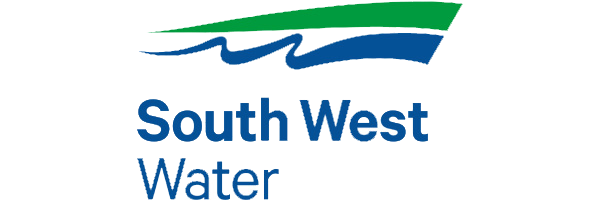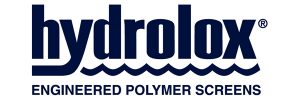Northbridge Eel Regulations Compliance Project (2024)
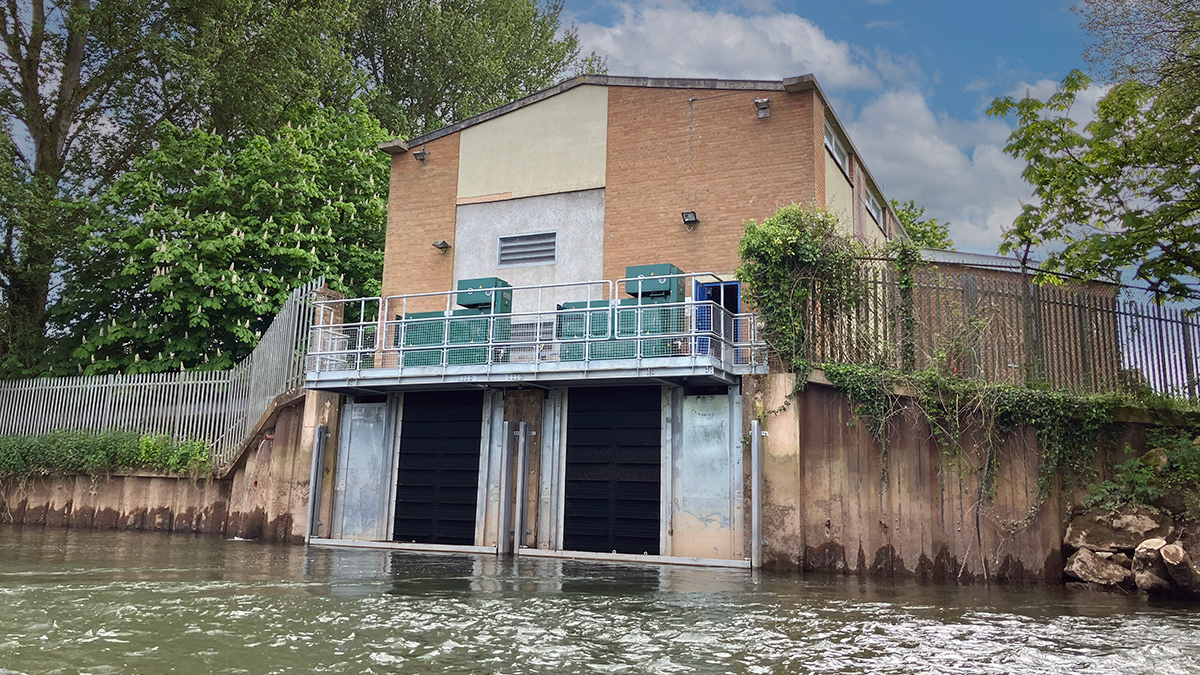
Complete Installation of two S1800 Hydrolox Screens and decking system - Courtesy of South West Water & Fishtek ltd
Northbridge is a key drinking water supply location with a large amount of upstream habitat available for eels. The intake is located 11km from the tidal limit on the right-hand bankside of the River Exe, Devon and is the intake for Pynes WTW. Abstraction occurs all year round, with typical abstraction rate between 30,000-40,000m3 per day with a maximum licenced flow is 66,450m3/day. Water is abstracted via two inlet lanes each consisting of a course and fine screen which feed a total of four pumps with the two lanes being able to be operated independently. All four pumps can be operated whilst one lane being closed if flow must be diverted around the closed lane using the actuated penstocks.
Background
The existing screening has coarse (9mm aperture) and fine (5mm aperture) screens within the pump house, which discharge debris and eels back to the river via a chute through the side wall.
The current screening will not meet 2025 statutory requirements and South West Water are addressing the issue now to ensure future compliance.
This project will deliver improved screening at the Pynes WTW intake with Eel Regulations compliance, which is required by the end of AMP7, ensuring continued operational abstraction at the site. There is a need to improve the exclusion of the freshwater stages of the critically endangered European eel from river intakes and abstractions allowing lifecycle completion at sea. Additionally, there is need for protection of downstream migrating salmonids. This includes both Atlantic salmon and brown (sea) trout.
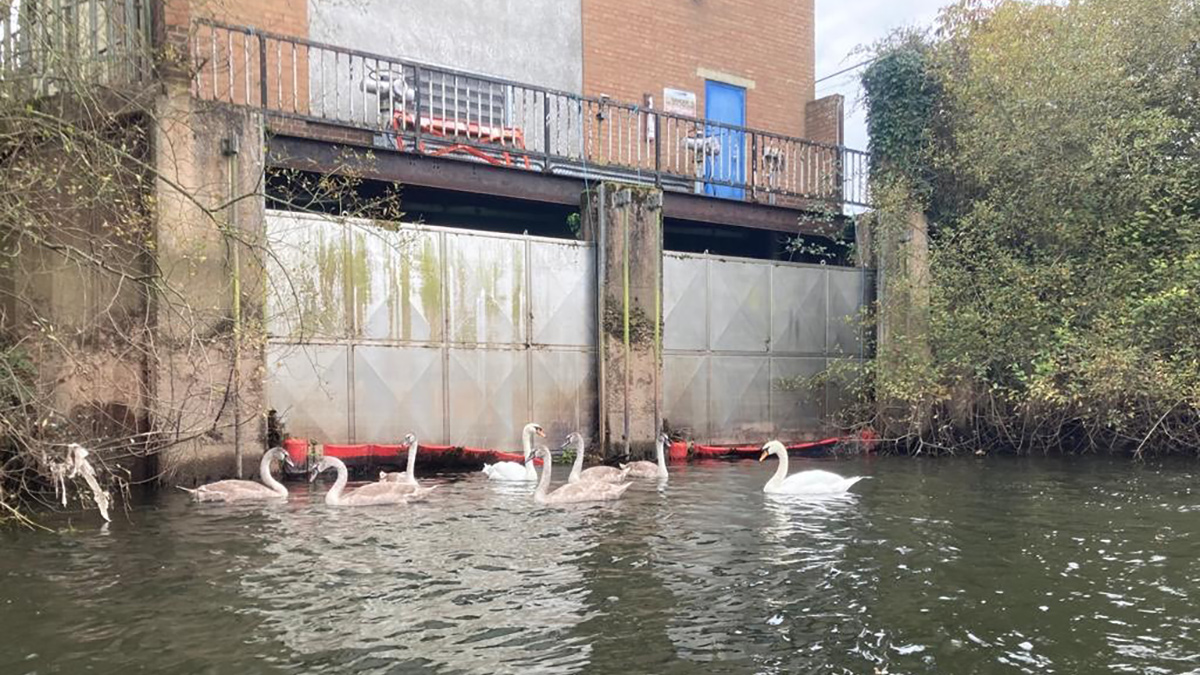
Existing intake structure (external screens at and below river level behind the debris boom with the access platform above) – Courtesy of South West Water & Fishtek ltd
Northbridge design considerations
The proposal was to install two 2.352m wide Hydrolox S1800 rotating band screens within the existing bankside infrastructure to replace the existing screening. This will reduce fish and eel entrapment at the intake and ensure compliance for continued operational transfer to Pynes Water Treatment Works. These screens also offer health and safety benefits, as well as OPEX and TOTEX cost benefits.
To allow the planned work to be undertaken, the inlet lanes had to be closed one at a time for the new screens to be installed and the old screens removed whilst still allowing for the 46,000m3/day abstraction. High water demands during the summer months had to be considered along with other consents and approval conditions, so the earliest date restrictions could be imposed was early September 2023. The work was therefore initially planned for a 4-month duration between September 2023 and January 2024.
During the installation period, South West Water had to allow for ‘recharge periods’ where both lanes could be open to allow for the 60,000m3/day abstraction. This would be over a weekend (Friday-Monday), and this allowed for a total of 50% of the installation period where recharge could be undertaken.
To be able to produce a feasible design, various surveys and reports had to be undertaken. These included dive surveys, ecological surveys, protected species surveys, GPR surveys, existing infrastructure surveys, 3D scans of the pump house building and underwater intake bays, and crane lift surveys.
The results of the surveys found the existing intake structure was structurally sound to be re-used for the new Hydrolox screens, which removed the need for using ‘wet’ concrete to construct the work, which would of entailed using a cofferdam. This removed a hazard from the new work within the design stage, benefitting both programme and cost savings.
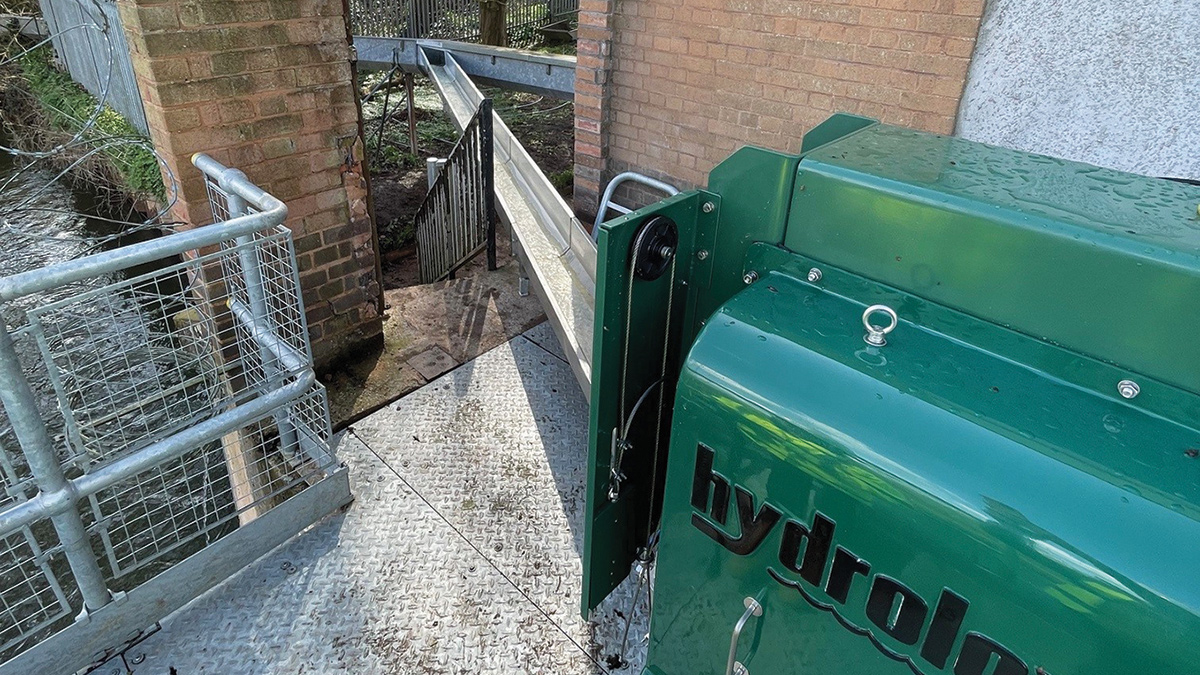
New debris return launder chute – Courtesy of South West Water & Fishtek Ltd
Hydrolox screen selection
Hydrolox S1800 rotating band screens were chosen for this scheme as they are considered an industry best practice solution by the Environment Agency. Benefits included:
- Through management and coordination between South West Water Operations and the contractor Fishtek ltd, this option carried less programme risks than alternatives because the ability to abstract river water during construction was retained.
- The solution was considered to be ‘riverside’ and therefore applicable for reduced screen sizes compared to the options available if they were to be set back from the riverbank.
- Being installed above-ground, inspection and maintenance of the screens removed the hazard of requiring confined space access.
- Being an accepted best practice solution, notably less consultation would be required with the National Eel Service Helpdesk, so this solution carried significantly less risk towards compliance.
Restricted site
The work site was approximately 330m from an unclassified single vehicle access road, and having to navigate down this road and track with oversize vehicles, along with having to contend with a section of Japanese knotweed was an early challenge. The rutted access track had to be regraded to accommodate the large vehicles and crane attendances along with protection of the knotweed to prevent cross contamination of the area across the area.
The site was extremely restricted and a 90t crane was required and had to be set up in a small area constrained by the existing building, the Network Rail mainline, 11Kva overhead power cables, outbuildings and mature trees.
Because the location was restricted and unsuitable for larger vehicles, the contractor had to change their methodology and bring the new structural elements in as individual components. These components were transferred onto smaller flatbed vehicles away from the site and reassembled in the small working area.
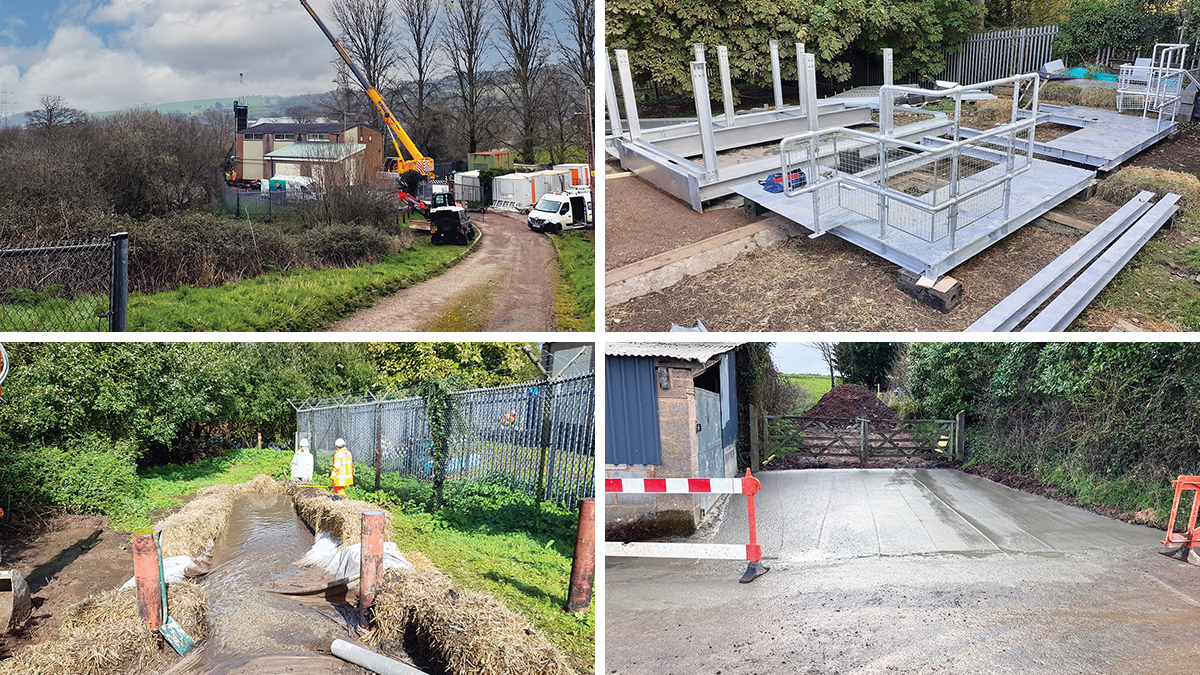
(top left) Crane setup within restricted location & approach track, (top right) structural steelwork components being fixed ready for lifting and installation, (bottom left) silt removal prior to installation of steelwork, and (bottom right) accommodation work installing new concrete apron at landowners access gate to provide turning for reversing delivery vehicles – Courtesy of South West Water & Fishtek Ltd
Construction phase
One of the first tasks was to remove the existing course trash screens and decking area over the River Exe intake in a safe and controlled manner, utilising a dive team to prop open the existing penstocks which remained in place until the scheme was complete and the equipment removed.
Upon successful removal of the existing equipment, the galvanised steel platforms (as required under DWI Regulation 31) were assembled on site and lowered into position within the existing reinforced concrete inlet structures and fixed with galvanised mechanical fixings. The steel platforms would house the two Hydrolox screens.
Other work streams involved mechanical and electrical interfaces, where decommissioning and removal of existing redundant equipment including the two sets of fine and coarse screens, wash water booster set, pipework and obsolete electrical equipment and cabling, all of which had to be phased in agreement with the Operations team.
Electrical scope included the installation of the instrumentation required to control the new screens and four ultrasonics, including a temperature sensor, and temporary isolation and installation of actuators for the external penstocks so that the new steel decking could be installed. This required good communication and agreement with the South West Water Operations team and the control centre.
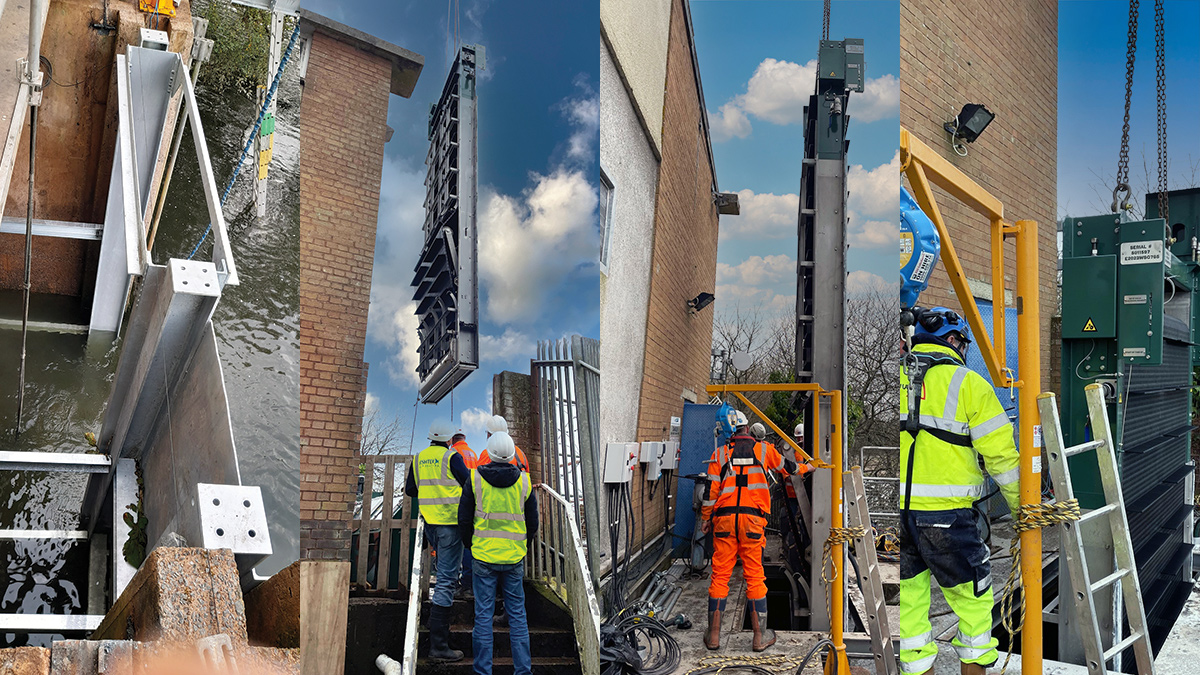
(left to right) Hydrolox screen installation, (i) steel support frame, (ii & iii) screen being lowered into position (note proximity to the building), and (iv) final positioning of the Hydrolox screen – Courtesy of South West Water & Fishtek ltd
Northbridge Eel Regulations Compliance Project: Supply chain – key participants
- Client: South West Water
- Principal designer & contractor: Fishtek Ltd
- Diving & civils contractor: Teignmouth Marine Services
- Ecological supervision: Colmer Ecology
- Supplier of eel screens: Intralox Ltd
- Instrumentation & controls contractor: SWW O&T Dept
- M&E contractor: A&T Electrical
- Structural steel supplier: Milestone Communications Ltd
- Wash water booster pumps: Xylem Water Solutions
- Trash screens, launder chute & deflector boom: TWS Ltd
- Lifting contractor: Spence Crane Hire Ltd
- Transportation contractor: ACE Crane & Transport Ltd
Value engineering
The contractor, Fishtek Ltd, worked efficiently, continually keeping the project team informed with progress and any issues that arose to agree a solution to keep the project momentum. During the time that the contractor was on site, value engineering principals were applied. Examples of this include the reuse of existing equipment such as the launder chute where a partial section was manufactured and installed which reduced the material usage by some 80%.
Another example of the value engineering approach was to take most of the removed equipment to Pynes WTW, which would be available to be re-used for spares and parts replacement.
This benefitted South West Water from disposal costs and the costs of new parts.
Another positive outcome of the project was that Fishtek Ltd, engaged South West Water’s O&T team to undertake the instrumentation and controls scope. This worked extremely well to the benefit of all parties, setting a precedent for future collaborative working.
Third party relationships
Good engagement with all stakeholders (EA, Network Rail, National Grid, landowners and South West Water’s Asset & Operational team) was maintained throughout the programme and there were zero complaints.
To get equipment and cranes onto site, the team required access via a landowner’s property so good relationship was developed and maintained throughout the project. By way of thanks, a new reinforced concrete slab was constructed at the field entrance as a good gesture for the landowner’s cooperation. Upon project completion, a final re-grading of the 330m track was undertaken, and the Japanese knotweed protection was kept in place.
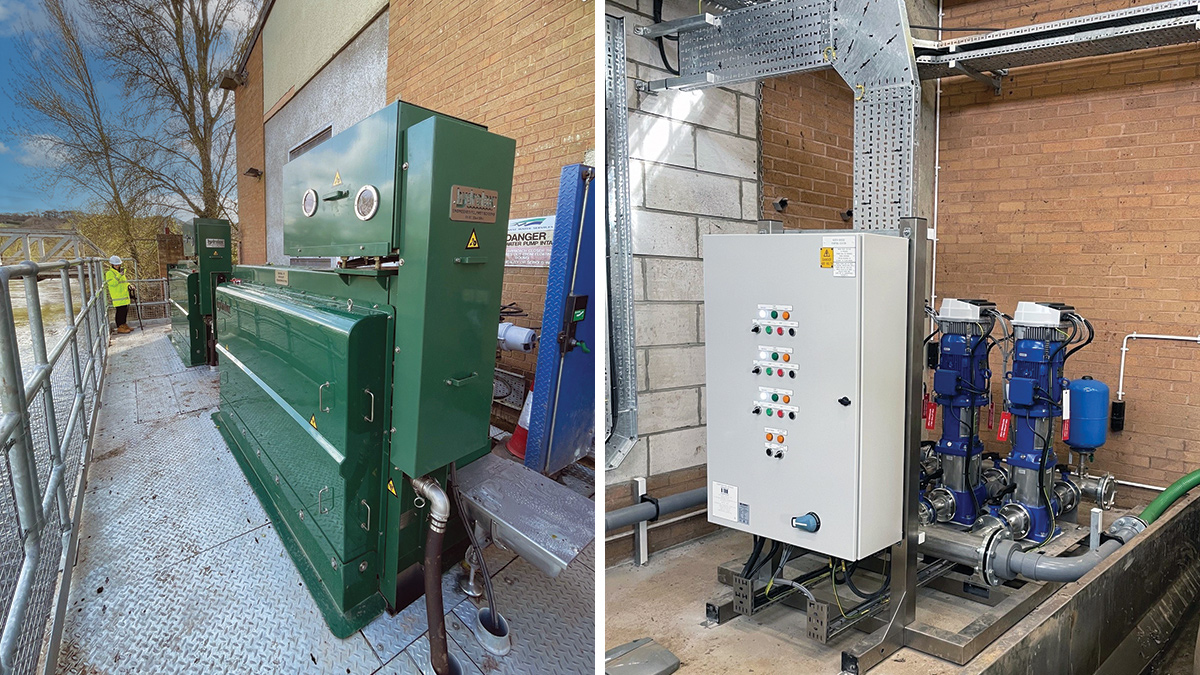
(left) Complete Installation of the S1800 Hydrolox screens and decking system, and (right) new wash water booster set which provides high pressure cleaning of the screens removing debris – Courtesy of South West Water & Fishtek Ltd
Conclusion & successes
Though the project was completed in an agreed revised programme due to several issues outside of the contractor’s control, the scheme was still completed almost one year ahead of the regulatory compliance date (March 2025).
The contractor demobilised from site in April 2024, with all that remains to be undertaken being the removal of one fine screen which was left in place at the request of the South West Water Operations team until the new screens had sufficient bedding in time, and after five river spate conditions of the River Exe had been experienced.
While on site, the contractor adopted a ‘see it, sort it’ ethos and several site operational safety improvements were identified and acted upon. Despite this additional work, the project scheme still came in 9% under budget.
Good health and safety was managed throughout the programme and the project was delivered with zero incidents or accidents.
The overall objective of the project was achieved and exceeded, gaining valuable lessons learnt for all involved so future schemes can be optimised throughout the project life cycle from conception through to construction and handover. This will allow for improved programme durations and activities, increased risk identification, improved tender scope and work information, as well as logistical restrictions and operational interface requirements.
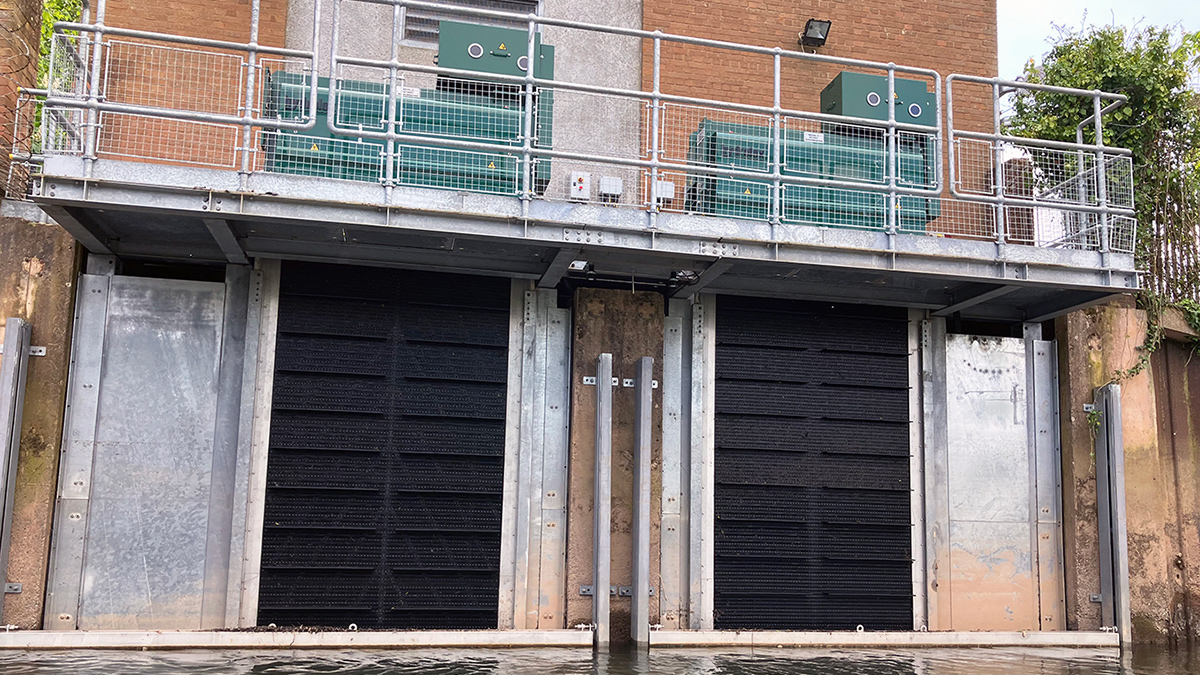
Complete Installation of S1800 Hydrolox Screens and decking system - Courtesy of South West Water & Fishtek Ltd


